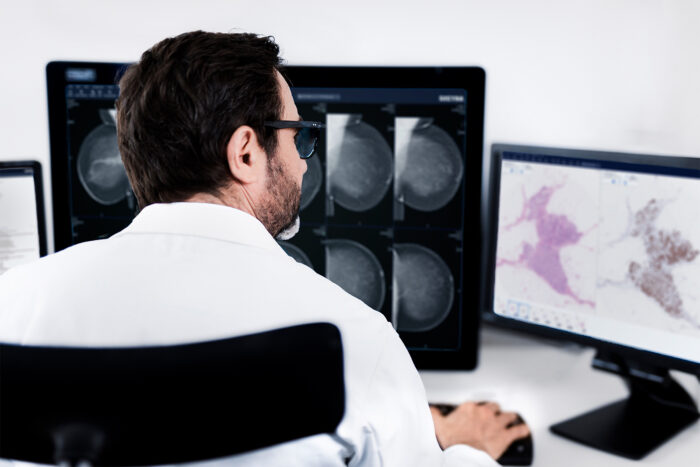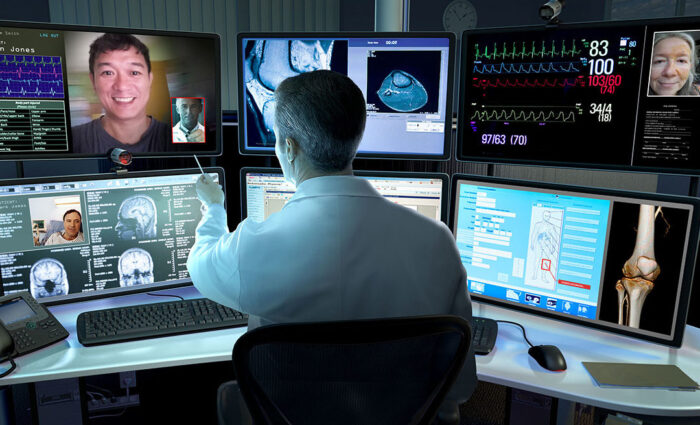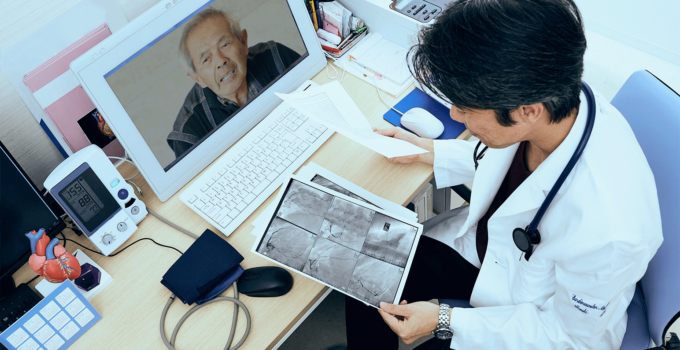The population’s interest in telemedicine surged over the course of the pandemic and paved the way for many healthcare providers to easily re-organize their services. In fact, the Medical Group Management Association reports that 97% of medical practices felt a negative Covid-related financial impact in some way. Fortunately, the digital era we live in allows pioneer ideas to blossom. Osteopathic manipulative treatment (OMT) for children or remote cardiac insufficiency monitoring are just some of the many inspiring examples.
What these unprecedented telemedicine use cases have in common is that they are backed up by innovative technology and talented software developers that make even the most unusual telehealth services possible. Working in Dreamix– a bespoke software development company, I have the chance to see the transformational influence of IT on the healthcare and pharma sectors. Digital mHealth apps for health tracking, hospital management systems, or smart wearable devices all rely on end-to-end software to deliver value. Read further to explore some of the best telemedicine tools for 2024:
Web Platforms for Telemedical Services

Source: techradar.com
Video conferencing with your health provider while you’re comfortably sitting at home is the next big thing. Of course, a remote doctor’s appointment is an additional service for less serious health problems or consultation about a non-life-threatening condition. Although online medical platforms existed prior to the pandemic, in 2024, many European healthcare providers sought a way to digitalize their products and services to remain relevant and ensure business continuity despite the challenges. The same was true for emerging market players.
Let’s take Allied for Startups (AFS) and their focus on improving global policies for startup companies as an example. Their 2024 case study on the telemedicine landscape in Europe reveals just how much efforts are going towards innovation in this sector. For instance, Atlas is a Romanian mental healthcare platform providing B2B and B2C services and the Spanish platform Decline, specializing in QR-based e-prescriptions. According to the report, 70-80% of patients’ medical inquiries can be addressed exactly if healthcare providers harness the opportunities of web platforms, which opens many possible opportunities for healthcare innovators.
Telemedicine Redefines “Have a Safe Flight”

Source: virtru.com
Everyone has heard or said the phrase “Have a safe flight!” while boarding an airplane. However, telemedicine helps give it a new meaning. Going beyond this well-intended wish, telemedicine has created a way to turn it into a reality and give passengers an extra secure flight experience. The physical and psychological effects of flying can be an enormous burden for both supposedly healthy passengers and passengers with previous illnesses, especially on long-haul flights and typical symptoms are stress, nausea and vomiting.
However is worse cases, the lower humidity or the lower air pressure in the flight cabin can lead to serious emergencies. Airline giants like Lufthansa, SWISS, and Austrian Airlines have even created a Doctors on Board program to encourage doctors to identify as such while traveling and receive additional perks. But what does telemedicine have to do with all this? Certain medical equipment needs to be on board for doctors to effectively help passengers in need, e.g. doctor’s kit or AED. In case of cardiac arrests, while flying, doctors can now perform EKG to rule out or diagnose heart attacks. Lufthansa currently partners with CardioSecur, an app operated by cabin crew and disposable EKG cables with electrodes, giving feedback in only 20 sec.
Cloud-Based mHealth Tools

Source: kolabtree.com
Slow speed, handling sensitive patient data, and inventory issues are among the most severe pain point for the healthcare sector. Cloud computing gives a fresh perspective on how to solve these and more. First, the cloud assures that all patient’s electronic health records (EHR) are centralized, making them accessible for doctors from anywhere. This is especially important when medical professionals give remote consultations or perform online patient monitoring. Second, cloud technology assures greater cybersecurity for safe, protected health information (PHI) storing and handling.
Future-oriented healthcare providers already utilize the power of cloud solutions in effective ways. For example, mHealth apps that are connected to the cloud are currently available for end-users and enjoy increasing popularity. The sweeping trends of personalized medicine, on-demand tracking apps, alongside the boosted overall health cautiousness, are the driving forces behind the surge in the demands for medical software development. Among the most popular health-related mHealth apps include tracking features (e.g. food intake, fitness, sleep, period, etc.), artificial intelligence (AI) for tailored recommendations and predictions, and a user-centric interface.
On the go Access to Medical Imaging

Source: medical.sectra.com
As remote appointments continue to rise and on-site patient visits remain scarce in some regions, many healthcare facilities are currently looking for a way to enable their employees to view and diagnose radiological image data remotely. A mobile tool called mRay allows doctors to conveniently share and discuss medical image data with colleagues using only a mobile device to do so. Indeed, the solution has been in use in several German university hospitals for several years.
Among other things, it provides secure, streaming-based, and scalable transmission of radiological images and virtual consultations with multiple colleagues. In fact, the provider company is a spin-off of the German Cancer Research Center and provides the solution free of charge for the duration of the coronavirus crisis. Furthermore, clinical departments and doctors can use the mobile platform, which works with standardized DICOM data formats without any restrictions.
What to Expect from Future Telemedicine?

Source: digitalmarketingtestsite.com
The world has been trembling for almost a year as a result of the coronavirus outbreak. Covid-19 side effects (such as lung issues, lightheadedness, mental fog, and even PTSD) are said to last for up to six months. Once seen as a light at the end of a long and dark tunnel, vaccines still can’t provide us with a “normal” life with the fourth wave approaching.
Still, medical doctors see telemedicine as a potent approach to alternative healthcare delivery in the near future. Having experienced the disastrous impact of the virus, frontline doctors rate telemedicine as the most promising technology and have high hopes that this will continue. Now that telemedicine’s span expands in less common medical specialties such as osteopathic pediatrics or even tele-veterinarian services, it is up to the innovative human spirit to navigate through the digital and highly personalized Health 4.0.


